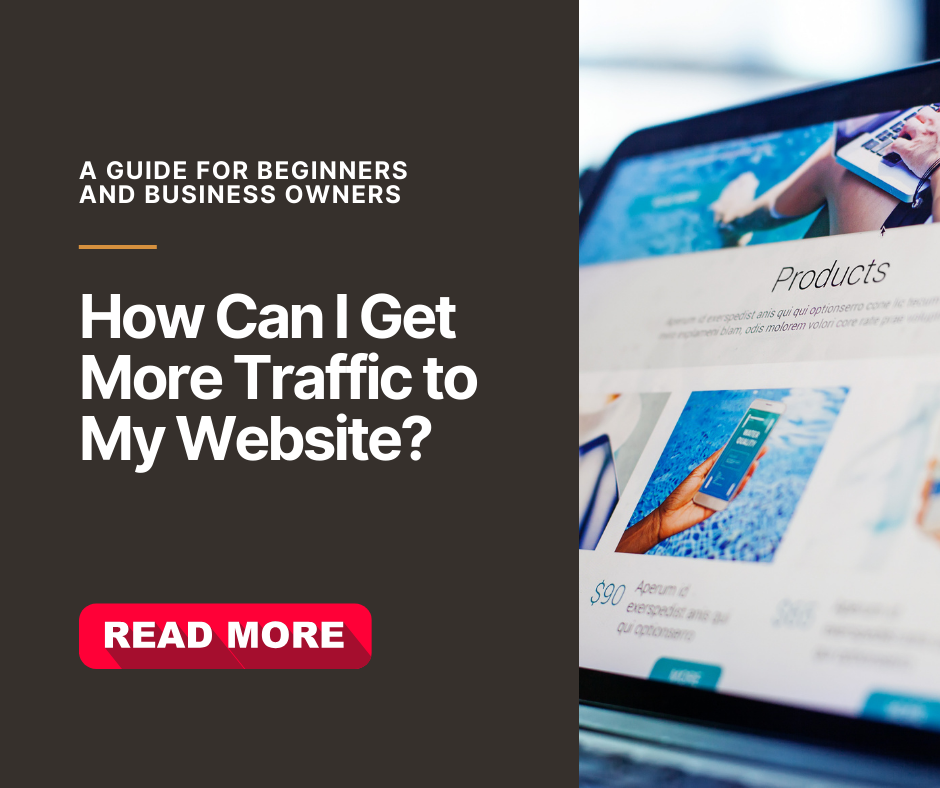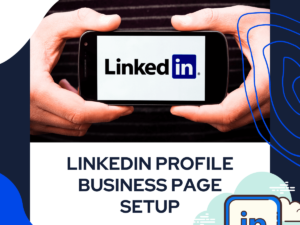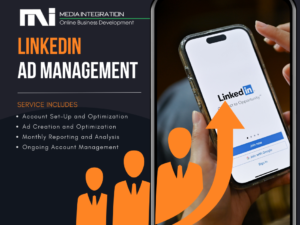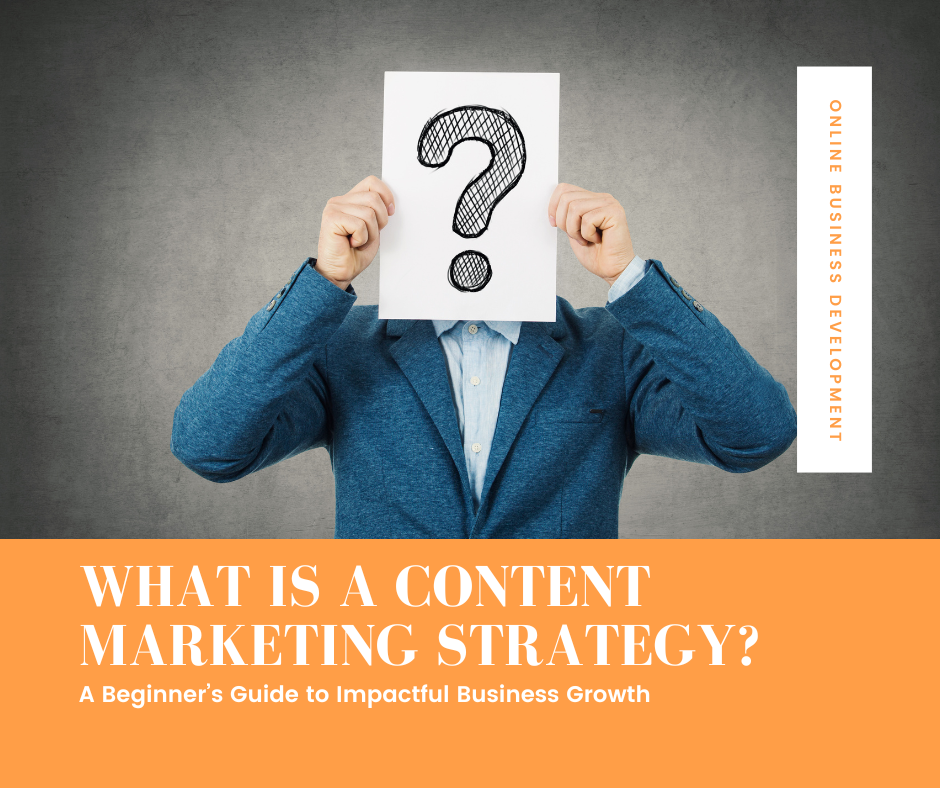As the digital world continues to expand, a prominent query resounds among newcomers to marketing and established business moguls: “How can I get more traffic to my website?” In today’s digital era, where online footprint equates to influence and potential growth, understanding website traffic becomes indispensable. Whether you’re navigating the initial steps of online marketing or a business entrepreneur seeking to amplify your online brand, mastering web traffic nuances is vital. Let’s dive into practical approaches to enhance your website’s visitor engagement.
Understanding the Digital Terrain
Identifying practical solutions is pivotal to grasping the complexities of the digital realm. With over 1.7 billion websites, as mentioned by Internet Live Stats, the online environment is a battleground. Here, only tactically designed websites can seize and maintain audience interest. Navigating this vast digital landscape can seem daunting, like finding a unique shop in a city filled with billions of options. To illustrate, let’s visualize a scenario:
Imagine a bustling metropolitan city center – let’s call it “Webville.” This city is unlike any other, with over 1.7 billion shops, each representing a website. Every shop owner in Webville is vying for the attention of the city’s numerous visitors, hoping they’ll step inside and make a purchase.
Let’s look at an example: meet Sarah, an ambitious shop owner who had initially set up her store with little planning. She saw she had filled her store with high-quality products, but few visitors came. She understood that her shop’s location in a hidden alley and its absence of attractive signage deterred customers.
Observing this, Sarah decided to revamp. She moved her store to a main street, added bright and welcoming signs, and began promoting special offers outside her door. She designed her store’s layout thoughtfully, ensuring visitors could easily find what they wanted. Word spread, and soon, Sarah’s store became one of the must-visit spots in Webville.
In the digital landscape of Webville, Sarah’s store transformation is akin to a tactically designed website. While there were billions of options available, her strategic decisions made her stand out and captivate the interest of her target audience, ensuring they not only visited but also engaged and returned.
The Profound Impact of Website Traffic
Website traffic is more than just a display of digital footprints; it directly reflects your brand’s influence and scope in the online ecosystem. Every click and every visit provides an insight into the efficacy of your marketing efforts. It’s not just about amassing vast numbers but about engaging the right audience, compelling them to explore further, and ultimately converting them into loyal customers. One can think of it as the heartbeat of your digital presence; the more consistent and robust it is, the healthier your online entity. A study by Forbes further underscores this notion. Research shows that businesses that attract, analyze, and effectively use their web traffic data can achieve a 45% higher growth rate than those that neglect this metric.
The Precision of Targeted Traffic
In the vast digital expanse, not all visitors arriving at your website will be pertinent to your brand or its offerings. While seeing high traffic numbers is undoubtedly rewarding, quality often trumps quantity. It’s paramount to differentiate between general traffic and targeted traffic. For instance, consider an e-commerce platform specializing in tech gadgets. If, due to specific promotional strategies or inadvertent keyword matches, they start drawing a crowd interested in fashion, it won’t benefit their business model. It’s analogous to a tech seminar accidentally publicized in a fashion magazine. While the workshop might see an influx of attendees, the engagement and retention would be minimal as the content wouldn’t resonate with the audience’s interests. Such misalignments can be costly, both in terms of resources and potential conversions. Therefore, ensuring your website traffic aligns with your brand’s ethos and offerings is pivotal for achieving meaningful engagement and conversions.
Bridging the Gap Between Precision and Action
While stressing the significance of targeted traffic, it’s crucial to acknowledge that comprehension is merely the journey’s beginning. The subsequent and equally important step is implementing strategies tailored to attract the right audience. This method brings us to our next segment, providing a blueprint for effectively boosting traffic and the right traffic.
Blueprint for Boosting Traffic – Bridging the Gap Between Precision and Action
While understanding the significance of targeted traffic lays a foundational insight, actionable steps are vital to translate that understanding into tangible results. In other words, knowledge without action remains just potential. To ensure you’re not only drawing visitors but also attracting the right audience segments, here’s a straightforward, practical blueprint that even beginners can implement:
- Audience Persona Development: Start by mapping out detailed profiles of your ideal visitors. What are their interests, demographics, or browsing behaviours? Instruments such as Google Analytics offer crucial perspective here.
- Keyword Research: Use tools like Google’s Keyword Planner or Ubersuggest to find relevant keywords your target audience might use. Aim for a mix of broad and long-tail keywords.
- Quality Content Creation: Regularly publish content that addresses the inquiries and preferences of your desired audience. Whether it’s blog posts, videos, or infographics, ensure it’s valuable and aligns with your audience’s needs.
- On-Page SEO: Optimize your content with the researched keywords. This optimization includes meta titles and descriptions within the range itself. Use tools like Yoast SEO to guide you.
- Engage on Social Media: Identify which platforms your audience frequents the most. Share your content there, engage in conversations, and consider running targeted ads.
- Backlink Building: Reach out to reputable sites in your industry for guest posting opportunities. Not only will this direct their audience to your site, but it will also improve your site’s authority in search engine rankings.
- Regularly Monitor and Adjust: Use Google Analytics or other analytics tools to track where your traffic is coming from, which content they engage with, and other essential metrics. Based on these insights, refine and adjust your strategies.
Remember, even though chasing every potential visitor might seem tempting, this blueprint aims to draw traffic that engages, converts, and adds value to your online presence. You can transition from merely attracting visitors to building a loyal and relevant audience base with consistency and dedication.
Listening to Your Audience and Setting Clear Objectives
A profound bond with the audience is at the heart of every triumphant digital approach. It’s not about what you think they need; it’s about truly understanding their desires, challenges, preferences, and behaviours. Establishing this profound connection involves active listening and requires a marketer or business owner to continually gather and analyze their audience’s data, feedback, and other signals.
Take the journey of digital marketing maestro Neil Patel. His triumph in the digital realm wasn’t just due to his extensive knowledge of SEO or marketing tactics. Instead, it was his continued dedication to tuning into his audience and understanding their evolving needs. Neil didn’t merely rely on generalized strategies or follow the crowd; he dug deep into analytics, conducted surveys, and engaged directly with his community to decode their preferences. This meticulous attention to detail allowed him to refine his content and strategies, making them exceptionally audience-centric. The result? His website traffic surged, which doubled in a relatively short span.
For any website or business looking to emulate such success, the formula is relatively simple yet demands dedication:
- Feedback Mechanisms: Implement tools or platforms, such as feedback forms, surveys, or even direct interactions, to capture what your audience is saying.
- Analytical Insight: Use analytics tools to comprehend user behaviour on your website. Which pages are they spending the most time on? Where do they drop off? What content resonates most?
- Community Engagement: Establish a strong presence on forums, social media, or community platforms pertinent to your niche. Listen to conversations, answer questions, and perceive the trending topics or challenges.
- Adapt and Implement: Take the insights from the above steps and infuse them into your strategies. Whether tweaking your content, optimizing your website’s user experience, or refining your product/service offerings, ensure they align with your audience’s feedback.
- Set Clear Objectives: Based on your insights, establish tangible goals. If Neil’s objective was to increase traffic, he likely broke it down further: which type of content to produce more, which marketing channels to leverage, or which audience segments to target specifically.
In essence, thriving in the digital space is a harmonious blend of listening to your audience and setting clear, actionable objectives based on those insights. By doing so, you’re not shooting in the dark but making informed decisions that align with genuine audience needs.
Quality over Quantity in Content
In the fast-paced digital landscape, where people produce content every second, there’s a direct pressure to create more to maintain relevance. However, many need to realize that producing content for the sake of volume can do more harm than good. As the leading search engine, Google has algorithms sophisticated enough to discern between content that offers genuine value and range that merely fills space. So, what does this mean for those striving to make a mark with their content?
Why Quality Matters
Research by Backlinko has thrown light on a compelling trend: comprehensive, well-researched content stands a better chance at higher rankings than quick, shallow posts. But why is this so?
- User Engagement: High-quality content keeps readers engaged. The longer a user stays on a page and interacts with its content, the more signals it sends to search engines about its relevance and value.
- Backlinks: Authoritative content often earns backlinks naturally. Other websites and content creators are more likely to link back to a thorough and credible source. These backlinks enhance domain authority and SEO rankings.
- Evergreen Value: Quality content tends to be timeless. While news articles or trend-based content may get a spike in traffic initially, a well-researched and comprehensive piece can draw consistent traffic over time.
Quantity’s Diminishing Returns
Producing content en masse can lead to burnout and a dilution in the output standard. The pitfalls of a quantity-driven approach include:
- Shallow Coverage: When focusing on producing more, skimming a topic’s surface is more manageable than offering in-depth insights. This method needs to satisfy user intent, leading to higher bounce rates.
- Resource Drain: Creating content involves time, effort, and often money. A focus on quantity can strain resources, making it challenging to maintain consistency.
- Algorithmic Penalties: Search engines can penalize sites for low-quality or duplicated content, affecting their organic search rankings.
Striking the Right Balance
In the fast-paced digital landscape, where people produce content every second, there’s a direct pressure to create more to maintain relevance. The key is to find a balance. Consider a content calendar that allows sufficient time for research, drafting, editing, and refining each piece. Factor in the time for promoting content — even the highest-quality article needs visibility.
In conclusion, in the grand chessboard of content strategy, always prioritize depth, research, and value over mere volume. Remember, it’s better to have a handful of articles or posts that resonate deeply with your audience and rank well on search engines than a plethora of superficial ones that fade into digital oblivion.
SEO: Making Your Mark
For many websites, organic search remains the primary source of traffic. I am grasping the significance of search engine optimization (SEO). It can’t be understated. When you ask, “How can I get more traffic to my website?” at its core, you’re delving into the realm of SEO. But what steps can one take to enhance visibility and position on search engines such as Google? Let’s break it down.
Why Google Rankings Matter
The correlation between search engine rankings and website traffic is robust. Citing statistics from Moz, it’s evident that an overwhelming 91.5% of all traffic goes to results on the first page of Google. This fact alone highlights the fierce competition for these coveted spots. But why is this so?
- User Trust: Generally, users trust search engines. A higher rank indicates authority and relevance, making users more likely to click on top results.
- Visibility: The higher the grade, the more people see your site. This increased visibility translates to more clicks and, subsequently, more traffic.
- User Experience: Search engines prioritize user experience. Websites offering valuable content are mobile-friendly and have quicker load times, ranking higher. Optimizing your site for users also optimizes it for search engines.
Leveraging Keywords for SEO
Keywords play a pivotal role in SEO. They act as the bridge connecting user queries to relevant content. To ensure that your website ranks for the correct search terms:
- Keyword Research: Use tools like Google’s Keyword Planner or Ubersuggest to identify terms relevant to your niche. Seek out keywords with good search volume while having comparatively minimal competition.
- Natural Incorporation: Stuffing your content with keywords can be counterproductive. Search engines have the advanced capability to detect and impose penalties for such strategies. Instead, weave keywords seamlessly into your content, ensuring it reads naturally.
- Long-tail Keywords: These are extended keyword phrases that are more specific. While they may draw fewer search queries, they frequently result in increased conversion rates as they cater to users nearing the decision-making or purchase stage.
Other Essential SEO Components
While keywords are crucial, SEO isn’t limited to them. Other components include:
- Backlinks: Having authoritative sites link back to your content boosts your site’s credibility in the eyes of search engines.
- Mobile Optimization: With an ever-growing number of users accessing sites via mobile devices, ensuring your site is mobile-friendly is paramount.
- Page Load Speed: Slow-loading pages can increase bounce rates and adversely impact rankings. Employ tools like Google PageSpeed Insights to assess and improve load times.
- Meta Descriptions and Titles: Not only do these communicate to search engines about your page’s content, but they also impact the frequency of clicks. Craft them to be concise, relevant, and engaging.
SEO is a comprehensive and ongoing endeavour. It’s not about quick fixes but consistent, informed strategies. By focusing on genuine value provision to users and optimizing various SEO components, your website can increase rankings, draw more traffic, and establish its mark in the vast digital realm.
The Might of Social Media and Paid Ads
You must recognize the power and influence of social media platforms. Gone are the days when these platforms were solely for socializing. Today, they are potent tools for businesses aiming to boost brand awareness, foster customer relationships, and drive website traffic. Combine this with the targeted precision of paid ads, and you have a formidable strategy to enhance your online presence.
The Dominance of Social Media in Modern Consumer Behavior
Platforms such as Facebook, Instagram, Twitter, LinkedIn, and, more recently, TikTok have transformed from mere communication channels to integral parts of a brand’s marketing mix. Here’s why:
- Audience Reach: Billions of users frequent these platforms daily. This vast user base offers businesses an unparalleled opportunity to reach a broad audience.
- Engagement: Social media isn’t just about broadcasting; it’s about engaging. Companies can interact with their audience, respond to queries, and even manage customer service issues.
- Targeted Marketing: Platforms like Facebook and Instagram offer sophisticated targeting tools, allowing businesses to reach a specific demographic based on interests, behaviours, and more.
- Consumer Insights: Sprout Social’s report suggesting that 74% of buyers utilize social media for purchasing decisions underscores the platform’s influence. These platforms provide a wealth of data, from engagement metrics to user feedback, which businesses can leverage for better decision-making.
Paid Ads: Getting the Visibility Edge
While organic growth on social media is valuable, the landscape is increasingly becoming pay-to-play and leveraging paid promotions on search engines and social networks. Offer businesses a sure-shot way to enhance visibility.
- Guaranteed Placement: Whether it’s a sponsored post on Instagram or a search ad on Google, paid advertisements ensure that your content appears prominently, often at the top of user feeds or search results.
- Targeting Precision: One of the primary benefits of paid ads is the granularity of targeting. You can tailor your ads to appear for specific keywords, within particular geographic locations, or even to a set age group.
- Budget Control: With paid ads, businesses can set daily or campaign-specific budgets, ensuring that spending never exceeds a defined limit.
- Analytics and ROI: Paid advertising platforms offer detailed analytics, allowing companies to measure everything from click-through rates to conversion. This data-driven approach ensures businesses can continually refine their strategy for the best ROI.
- Diverse Ad Formats: From video ads on YouTube to carousel posts on Instagram, various ad formats allow businesses to craft varied and engaging campaigns.
Balancing the Two for Maximum Impact
While both social media marketing and paid ads offer immense potential, the magic lies in their balanced integration. A robust digital strategy incorporates organic social media growth—sharing valuable content, engaging with followers, and building a community. Simultaneously, it leverages the power of paid ads for targeted campaigns, product launches, or when entering new markets.
As the digital marketplace becomes more crowded, harnessing the might of social media combined with the precision of paid ads is no longer optional—it’s essential. This dual approach can significantly boost website traffic and overall brand visibility when executed correctly.
Community Engagement and Collaborative Endeavors
In an age where digital marketing is increasingly pervasive, a brand’s genuine connection with its audience and industry peers has never been more crucial. While technological advancements enable us to reach a wider audience, the quality of the relationship truly makes a lasting impact. Engaging directly with your community and collaborating with industry partners are proven methods to foster this authentic connection.
The Power of Genuine Engagement
- Building Trust: Direct interaction with your audience, whether responding to comments on your blog, addressing feedback on social media, or participating in relevant online forums, fosters a level of trust that automated marketing can’t achieve. Such interactions give your brand a human face, making it more relatable and trustworthy.
- Gathering Insights: By maintaining an open line of communication with your audience, you’re privy to invaluable feedback. This direct line can illuminate your audience’s values, pain points, and expectations of your brand.
- Boosting Brand Loyalty: An audience that feels heard and valued is likelier to remain loyal. By actively engaging with your followers, you’re not just retaining them; you’re converting them into brand ambassadors who will likely recommend you to others.
Collaborative Endeavors: Expanding Your Reach Organically
- Guest Blogging: As highlighted by HubSpot’s impressive 300% increase in traffic, this strategy involves writing articles for other reputable websites in your industry. It positions you as an industry expert, exposes your brand to a broader audience, and often provides backlinks that can boost SEO.
- Joint Webinars and Workshops: Collaborating with industry peers on joint initiatives such as webinars or workshops can help pool resources and audiences. This collaboration expands your reach and offers fresh content to your followers.
- Influencer Collaborations: Collaborating with influencers within your domain can showcase your brand to a broader audience. While still maintaining focus on your target group. Introduce your brand to a more general, yet still targeted, audience. Such partnerships can yield significant traffic boosts, whether a product review, a joint content piece, or an event.
- Cross-promotions: Collaborate with brands that target your audience but aren’t direct rivals for joint promotions. For example, a fitness blog could team up with a health food brand to give each other shout-outs or combine promotional offers.
A Continuous Cycle of Growth
Community engagement and collaboration should be considered ongoing efforts, not one-time strategies. The digital realm is dynamic, with audience preferences and industry trends constantly evolving. By keeping your finger on the pulse through regular community interactions and remaining open to new collaborative opportunities, you can ensure sustained growth and relevance in the digital landscape.
Final Thoughts on how can I get more traffic to my website?
In the digital age, where the landscape is vast and ever-evolving, the query “How can I get more traffic to my website?” remains both a challenge and an opportunity. The beauty of this challenge lies in its dynamism; there isn’t a one-size-fits-all answer. Instead, the solution requires an amalgamation of strategies, persistent effort, and the willingness to adapt.
Align with Your Audience’s Pulse: Understanding and resonating with your audience is the bedrock of any successful digital strategy. You lay the groundwork for authentic interactions and enduring bonds by prioritizing their needs and inclinations.
Quality Content as Your Beacon: In the vast sea of online content, the lighthouses of quality shine the brightest. Your audience seeks value, insight, and authenticity. Regularly offering these will attract visitors and turn them into loyal brand supporters.
Harnessing the Power of SEO: In today’s digital landscape, being the best is only enough if you’re visible. SEO serves as the bridge between your high-quality content and potential readers. The pathway ensures those searching for what you offer can find you easily.
Active Engagement: Beyond Passive Strategies: Passive strategies might bring users to your doorstep, but active engagement ensures they stay, interact, and return. Whether through community discussions, social media interactions, or collaborations, active engagement enriches the user experience and deepens brand loyalty.
Adaptability in the Fluid Digital Ecosystem: The digital realm isn’t static. As technologies advance, user behaviours shift, and new platforms emerge. Remaining flexible and open to change ensures you stay pertinent and consistently address the requirements of your audience.
Overview and Recap:
This article embarked on a journey to address the perennial question many digital enthusiasts and business owners grapple with: “How can I get more traffic to my website?”. We explored the importance of understanding and catering to audience preferences, the non-negotiable need for quality over quantity in content creation, the integral role of SEO in enhancing visibility, the power of active online engagement, and the necessity of adaptability in the fluid online world. As we wrap up, remember that driving traffic isn’t just about numbers; it’s about building meaningful relationships and offering genuine value. With the right approach, not only can you increase







